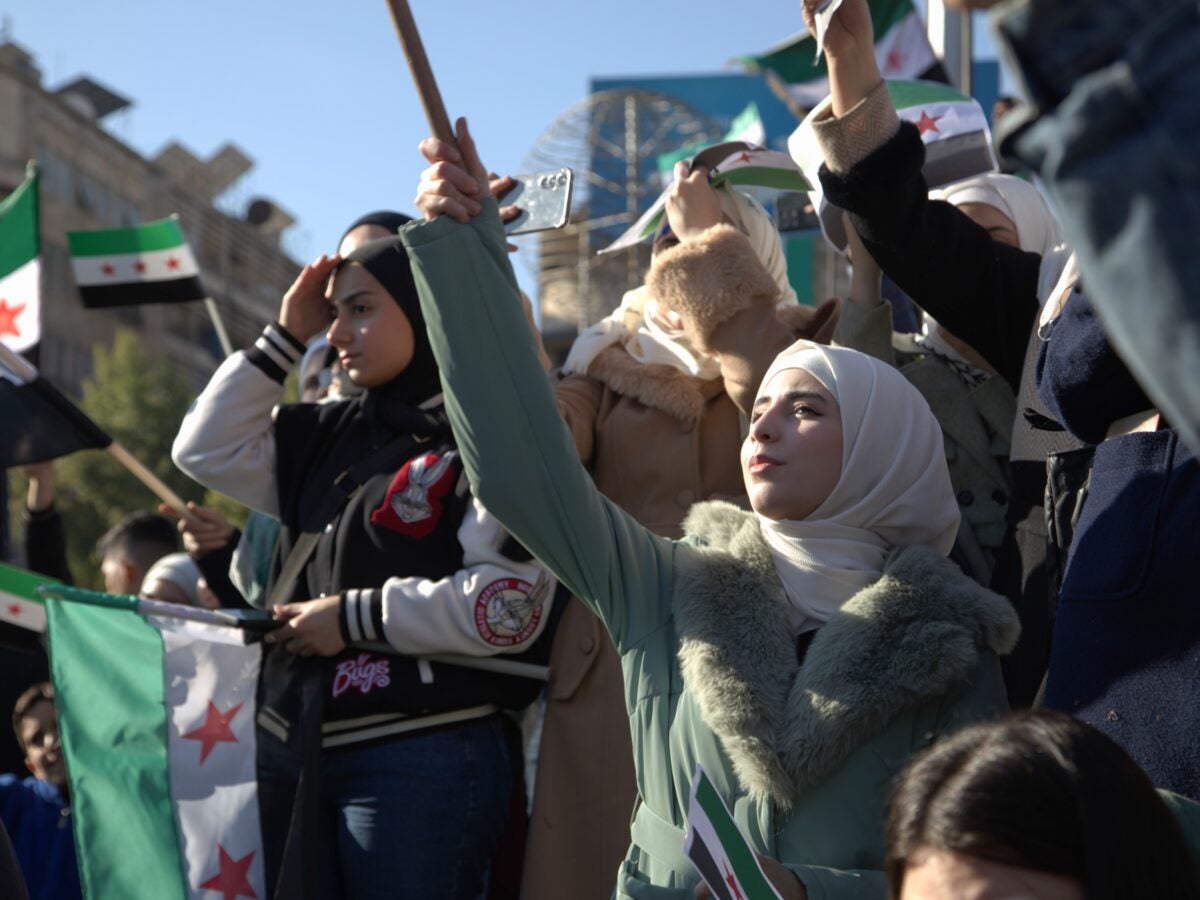Sexual Violence as a Tactic of War

This article was originally published on the University of Pennsylvania Carey Law School’s website.
On December 21st, Pramila Patten, the Special Representative of the Secretary General on Sexual Violence in Conflict, reaffirmed categorically that sexual violence should never, under any circumstances, be used as a tactic of war. In reiterating that all forms of sexual violence are strictly prohibited under international humanitarian and human rights law, she urged all states, non-state actors, and multilateral institutions to support prompt and rigorous investigations of all reports of sexual violence allegedly committed by Hamas on October 7.
The Categorical Prohibition of All Forms of Sexual Violence against Civilians
“Demands that all parties to armed conflict immediately take appropriate measures to protect civilians, including women and girls, from all forms of sexual violence…on the categorical prohibition of all forms of sexual violence against civilians.” – UN Security Council Resolution 1820
Recent conflict has once again raised the alarm of gender-based violence as a tactic of war: from gender-based violence by Al-Shabaab in Somalia, the Islamic State of Iraq and Syria (ISIS), gendered targeting of women in the north of Mali and the Yazidi women by ISIS, to the abduction and sexual abuse of Nigerian school girls by Boko Haram and gender persecution in Iran and Afghanistan. Most recently, reports of rape in the DRC and Sudan, and allegations of sexual violence committed by Hamas on October 7 and the war in Gaza have shocked our collective conscience.
The Women, Peace, and Security (WPS) Agenda’s UNSCR 1820 calls for a categorical prohibition of sexual violence against civilians. Against a backdrop of continuing conflict, I examine a few elements of these seminal security council resolutions that address sexual violence in conflict.
The WPS Security Council resolutions have emphasized sexual violence as the primary impact of conflict on women and girls. This has led to an underemphasis on other gender-specific categories of violent extremism and terrorism, including, for example, restrictions on freedom of movement, mandatory dress codes, unequal distribution of food, banning or otherwise inhibiting access to education, and exclusion of employment, and participation in cultural activities. This critique echoes that which is often made of the women, peace, and security agenda; that it unwittingly reproduces a paradigm of victimhood and vulnerability by international institutions with a disproportionate focus on sexualized victimhood. Although I have joined in this critique, it is important to reiterate that the recognition of sexual violence in conflict was itself a hard-won victory, growing out of a heated debate on the appropriate role of the Security Council.
While the seminal UNSCR 1325 in 2000 called for women’s leadership in conflict prevention, resolution, and peace-building, it was only in 2008 that UN Security Council Resolution 1820 addressed conflict-related sexual violence. The then-U.S. Secretary of State Condoleezza Rice opened the ministerial debate on sexual violence in armed conflict by conceptualizing the long march to the unlikely adoption of UNSCR 1820: “As many here are aware, for years there has been a debate about whether or not sexual violence against women is a security issue for this body [United Nations Security Council] to address. I am proud today we can respond to that lingering question with a resounding ‘yes.’ This world body now acknowledges that sexual violence in conflict zones is, indeed, a security concern.” It must also be recalled that a few months later, in 2009, then-U.S. Secretary of State Hillary Rodham Clinton introduced UNSCR 1888 which established the Office of the Special Representative of the Secretary General on Sexual Violence in Conflict.
The WPS debate in 2008 resulted in the Security Council defining sexual violence as a threat to international security in the unanimous adoption of the UNSCR 1820. Linked to this seminal acknowledgment of sexual violence in conflict was an emphasis on the WPS Agenda’s cardinal focus on women’s decision-making in conflict prevention and peace-making, which “[e]mphasizes the role of women in the prevention and resolution of conflicts and in peacebuilding and stressing the importance of their equal participation and full involvement in all efforts for the maintenance and promotion of peace and security, and the need to increase their role in decision-making with regard to conflict prevention and resolution….”
Although UNSCR 1820 addresses the disproportionate impact of sexual violence on women, the language in the resolution includes an understanding that “civilians account for the vast majority of those adversely affected by armed conflict; although that women and girls are particularly targeted by the use of sexual violence, including as a tactic of war to humiliate, dominate, instill fear in, disperse and/or forcibly relocate civilian members of a community or ethnic group.” The Resolution also recalls the “range of sexual violence offenses in the Rome Statute of the International Criminal Court and the statutes of the ad hoc international criminal tribunals,” In this definition under the Rome Statute, sexual violence includes a broad category of violence such as “forced pregnancy and forced sterilization and other gendered crimes: Rape, sexual slavery, enforced prostitution, forced pregnancy, enforced sterilization, or any other form of sexual violence of comparable gravity;” Accountability is written large in UNSCR 1820: “that parties to armed conflict bear the primary responsibility to take all feasible steps to ensure the protection of affected civilians.”
Zero Tolerance Policy Under UNSCR 2242
UNSCR 2242, too, was paradigm-shifting in its gender focus on countering and preventing violent extremism. The Resolution “calls for the greater integration by Member States and the United Nations of their agendas on women, peace and security, counter-terrorism and countering-violent extremism which can be conducive to terrorism, to integrate gender as a cross-cutting issue throughout the activities within their respective mandates, including within country-specific assessments and reports…” It also underscores the Secretary-General’s continued efforts at implementing his policy of zero tolerance of misconduct. Although these efforts are primarily in regard to UN Peacekeeping personnel, the zero-tolerance policy could be applied to all sexual violence in conflict.
Who Is Accountable Under UNSCR 2467?
UNSCR 2467 is the first WPS resolution that recognizes the link between sexual violence in conflict and the illicit trade in natural resources, including so-called “conflict minerals.” The UNSCR 2467 further recognizes the need for private sector actors to ensure that proceeds from materials acquired for their production do not fund armed groups that perpetuate conflict and sexual violence in conflict and post-conflict situations. Furthermore, 2467 for the first time applies the WPS and to an understanding of sexual violence against men and boys too.
The Resolution’s first operative paragraph “reiterates its demand for the complete cessation with immediate effect by all parties to armed conflict of all acts of sexual violence and its call for these parties to make and implement specific time-bound commitments to combat sexual violence.” Further, in paragraph 10, the Security Council “urges existing Sanction Committees … to apply targeted sanctions against those who perpetrate and direct sexual violence in conflict.”
In fact, UNSCR 2467 underscores the Arms Trade Treaty and notes that exporting States Parties shall take into account the impact of the arms trade on gender-based violence. “Acknowledging the adoption of the Arms Trade Treaty and noting the provisions in Article 7(4) of the Treaty that exporting States Parties shall take into account the risk of covered conventional arms or items being used to commit or facilitate serious acts of gender-based violence or serious acts of violence against women and children.”
While UNSCR 1820 holds parties to a conflict accountable, UNSCR 1820 read with UNSCR 2467 provides an accountability paradigm that can be expanded to cover all parties to the conflict including countries that directly or indirectly fund gender-based violence through trade in conflict minerals or by arms trade.
Principles of Humanity
Despite the power of the WPS agenda to address sexual and other forms of gender-based violence as a security threat, there are still many grey areas in the application of the law in addressing sexual violence in conflict. The evidentiary requirements may often trump a victim-centered approach in holding perpetrators accountable for gender-based violence in conflict. As Theodore Meron, a giant of international law and former president of the International Criminal Tribunal for the Yugoslav (ICTY), articulated in his authoritative article on “The Humanization of Humanitarian Law”, gaps remain between what we object to on human rights grounds and what is covered by humanitarian law. He notes that in accordance with the Preamble to the Geneva Convention’s Marten Clause, “the principles from the law of humanity and the dictates of public conscience must apply to humanitarian law.” The humanization of humanitarian law is a process driven to a large extent by human rights and the principles of humanity.
Seventy-five years ago, in the aftermath of the horrific human toll of World War II, world leaders embarked on the revolutionary idea to uphold universal human rights. From that endeavor rose the Universal Declaration of Human Rights (UDHR) forged on a consensus among representatives from diverse states, political systems, cultures, languages, and religions to recognize “the inherent dignity and of the equal and inalienable rights of all members of the human family.” Together with the Martens Clause and its invocation of the laws of humanity and the dictates of public conscience, it is the human rights revolution and the UDHR that appeal to our common humanity.
Twenty-five years ago, the Akayesu case marked the first judgment of rape as a crime against humanity. Largely due to pressure from women’s groups and the leadership of the only female judge, Justice Navi Pillay on the International Criminal Tribunal of Rwanda, that for the first-time rape as a tool of genocide was addressed and the law pertaining to sexual violence was changed irrevocably.
The WPS Agenda builds on the fundamental values of the UDHR and the Akayesu case and calls for a renewed commitment towards a “categorical prohibition of sexual violence in conflict.” Gender-based violence in conflict goes far beyond sexual violence and often overlaps with several categories of gender persecution. Sexual violence in conflict remains one of the most dehumanizing tactics of war and demands international justice for all survivors and victims everywhere. If we take gender justice out of the criminal justice system, we are left with a system that only serves the criminal.
“If we take gender justice out of the criminal justice system, we are left with a system that only serves the criminal,” writes Rangita de Silva de Alwis, who is an expert member of the treaty body to the UN Convention on the Elimination of Discrimination against Women (CEDAW) and its focal point on Women, Peace, and Security. She is on the faculty at the University of Pennsylvania Carey Law School and the Hillary Rodham Clinton Global Fellow on Gender Equity at the Georgetown Institute for Women, Peace, and Security. These views are her own. Related articles from the author include:
Explore More

Guerras y conflictos tienen en jaque los derechos de las mujeres en…

One Year After the Transition: Syrian Women Reflect on a Fragile Opening…
One year after the fall of the Assad regime, the Georgetown Institute…

The Future of Women, Peace and Security Belongs to America’s Allies
For international partners sustaining the global WPS agenda amid shifting U.S. priorities…